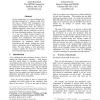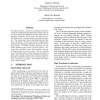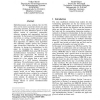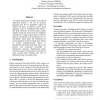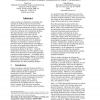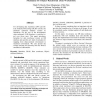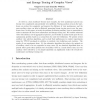DMDW
2000
14 years 4 months ago
2000
Access. permissions in a data warehouse are currently managed in a separate world from the sources' policies. The consequences are inconsistencies, slow response to change, a...
DMDW
2000
14 years 4 months ago
2000
This paper describes a method for developing dimensional models from traditional Entity Relationship models. This can be used to design data warehouses and data marts based on ent...
DMDW
2000
14 years 4 months ago
2000
A common optimization technique in the OLAP application domain is the use of summary aggregate data. For an appropriate support of analysis hot spots, we propose a query based agg...
DMDW
2000
14 years 4 months ago
2000
A data warehouse is designed to consolidate and maintain all attributes that are relevant for the analysis processes. Due to the rapid increase in the size of the modern operation...
DMDW
2000
14 years 4 months ago
2000
For developing data warehouse (DW) and OnLine Analytical Processing (OLAP) systems, the dominant relational database reaches its limitations. On the way of the development, object...
DMDW
2000
14 years 4 months ago
2000
View materialization is a central issue in logical design of data warehouses since it is one of the most powerful techniques to improve the response to the workload. Most approach...
DMDW
2000
14 years 4 months ago
2000
The gap between researchers and practitioners is widely discussed in the IT community. The purpose of this paper is towards showing the issues which occupy both research and pract...
DMDW
2000
14 years 4 months ago
2000
As views in a data warehouse become more complex, the view maintenance process can become very complicated and potentially very inefficient. Storing auxiliary views in the warehou...
DMDW
2000
14 years 4 months ago
2000
Data warehousing is a software infrastructure which supports OLAP applications by providing a collection of tools which allow data extraction and cleaning, data integration and ag...
